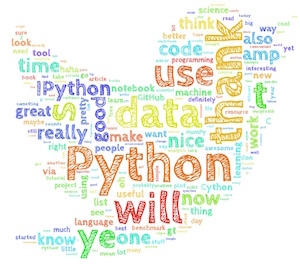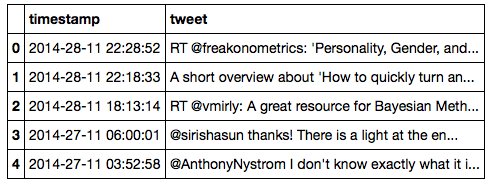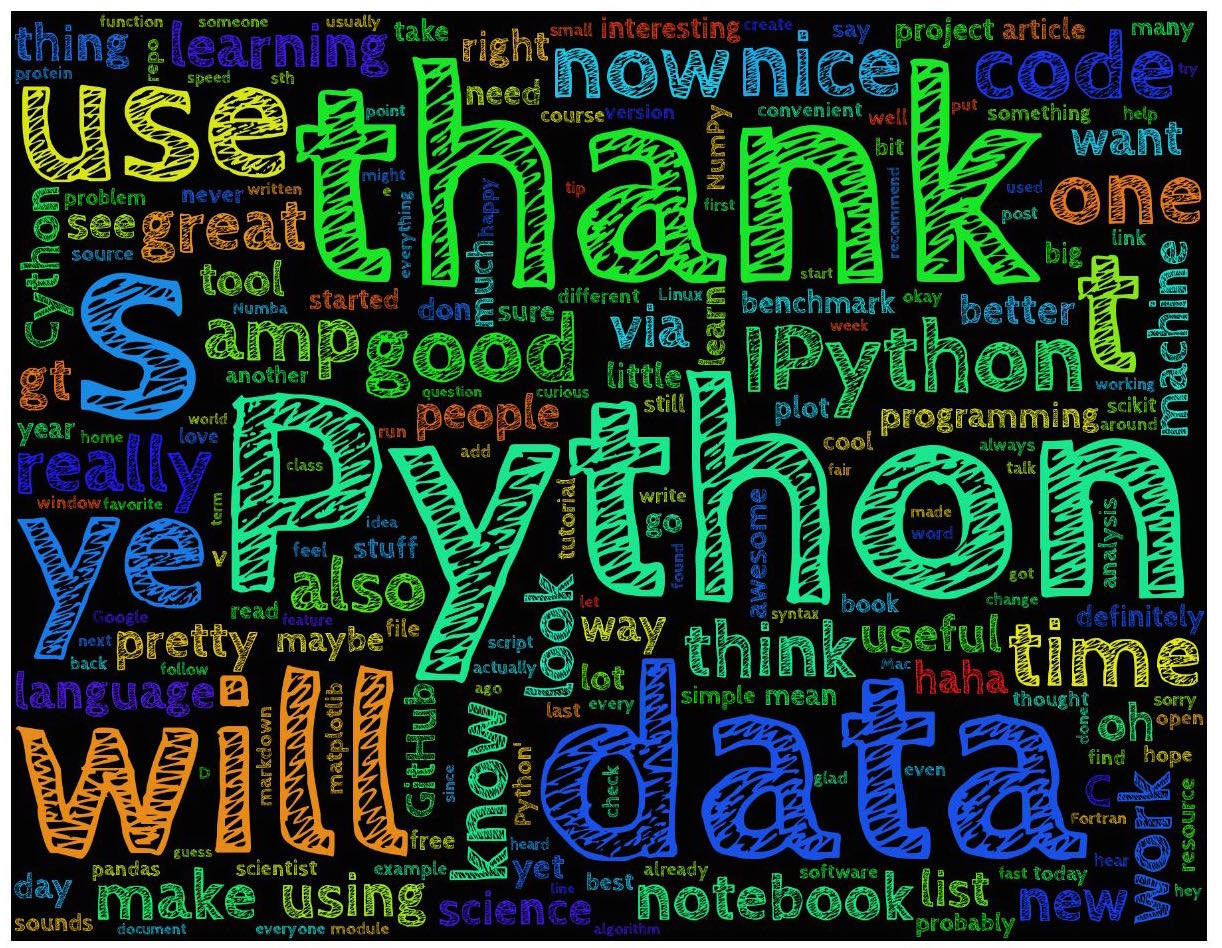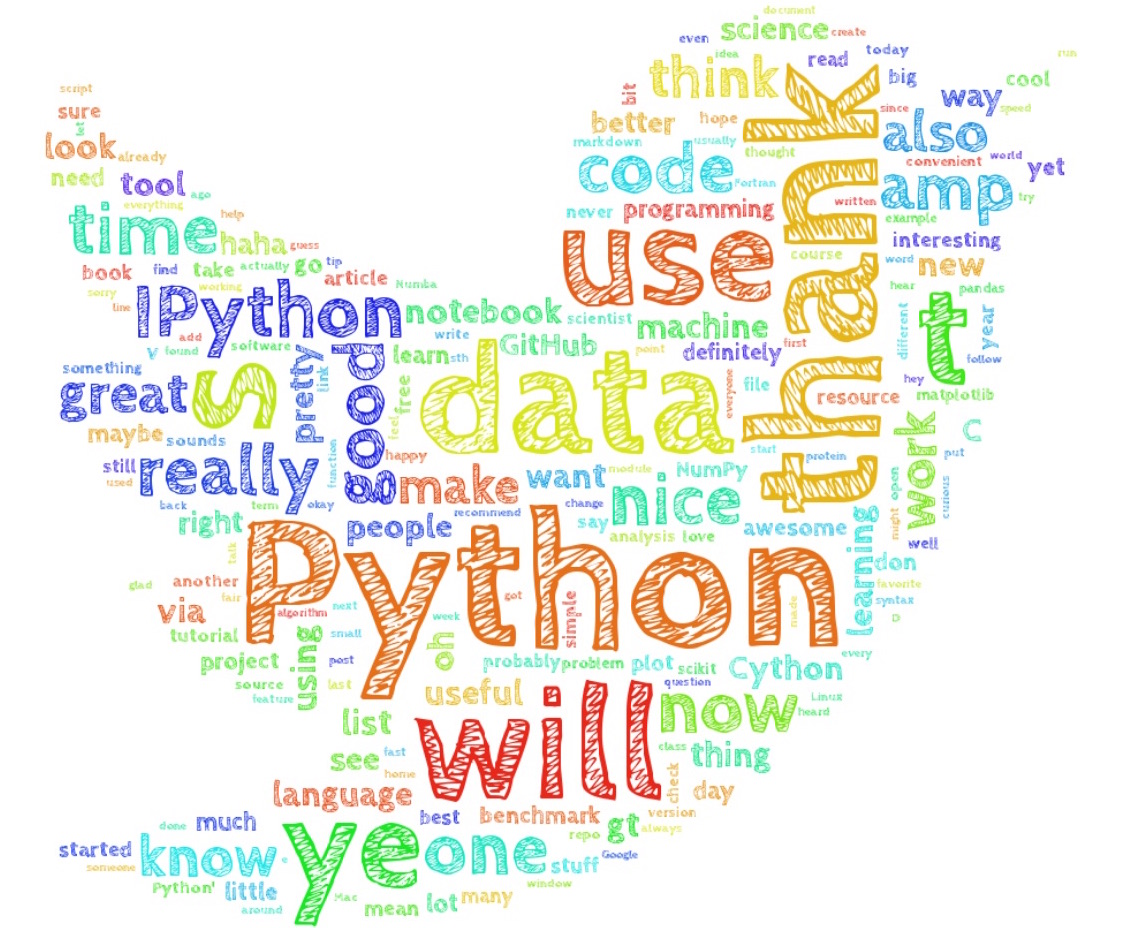Create Word Cloud From Twitter Feed
Turn Your Twitter Timeline into a Word Cloud Using Python #
Last week, I posted some visualizations in context of "Happy Rock Song" data mining project, and some people were curious about how I created the word clouds. I thought it might be interesting to use a different dataset for this tutorial: Your personal twitter timeline.

Sections #
- Turn Your Twitter Timeline into a Word Cloud Using Python
- Sections
- Requirements
- A. Downloading Your Twitter Timeline Tweets
- B. Creating the Word Cloud
Requirements #
Before we get started, I want to list some of the required packages to make this work!
Below, you find a list of the basic packages which can be installed via
pip install <package_name> - pyprind
- numpy
- matplotlib
- pandas
- scipy
And the Python (2.7) wordcloud package by Andreas Mueller can be installed via
pip install git+git://github.com/amueller/word_cloud.git Note that wordcloud requires Python's imaging library PIL. Depending on the operating system, the installation and setup of PIL can be quite challenging; however, when I tried to install it on different MacOS and Linux systems via conda it always seemed to work seamlessly:
Let me use my handy watermark extension to summarize the different packages and version numbers that were used in my case to download the twitter timeline and create the word cloud:
%load_ext watermark %watermark -d -v -m -p twitter,pyprind,wordcloud,pandas,scipy,matplotlib 28/11/2014 CPython 2.7.8 IPython 2.1.0 twitter 1.15.0 pyprind 2.8.0 wordcloud 1.0.0 pandas 0.14.1 scipy 0.14.0 matplotlib 1.3.1 compiler : GCC 4.2.1 (Apple Inc. build 5577) system : Darwin release : 14.0.0 machine : x86_64 processor : i386 CPU cores : 2 interpreter: 64bit A. Downloading Your Twitter Timeline Tweets #
In order to download our twitter timeline, we are going to use a simple command line tool twitter_timeline.py. The usage is quite simple, and I have detailed the setup procedure in the README.md file which can be found in the respective GitHub repository. After you provided the necessary authentication information, you can run it from your terminal via
python ./twitter_timeline.py --out 'output.csv' in order to save your timeline in CSV format.
Alternatively, you can import the TimelineMiner class from the twitter_timeline.py to run the code directly in this IPython notebook as shown below.
import sys sys.path.append('../../twitter_timeline/') import twitter_timeline import oauth_info as auth tm = twitter_timeline.TimelineMiner(auth.ACCESS_TOKEN, auth.ACCESS_TOKEN_SECRET, auth.CONSUMER_KEY, auth.CONSUMER_SECRET, auth.USER_NAME ) print('Authentification successful: %s' %tm.authenticate()) tm.get_timeline(max=2000, keywords=[]) Authentification successful: True Tweets downloaded: 1999 
If you used twitter_timeline.py from the terminal terminal, you can read the "tweets" from the CSV file via
import pandas as pd df = pd.read_csv('path/to/CSV') B. Creating the Word Cloud #
Now that we collected the tweets from our twitter timeline the creation of the word cloud is pretty simple and straightforward thanks to the nice wordcloud module.
import matplotlib.pyplot as plt from wordcloud import WordCloud, STOPWORDS # join tweets to a single string words = ' '.join(tm.df['tweet']) # remove URLs, RTs, and twitter handles no_urls_no_tags = " ".join([word for word in words.split() if 'http' not in word and not word.startswith('@') and word != 'RT' ]) wordcloud = WordCloud( font_path='/Users/sebastian/Library/Fonts/CabinSketch-Bold.ttf', stopwords=STOPWORDS, background_color='black', width=1800, height=1400 ).generate(no_urls_no_tags) plt.imshow(wordcloud) plt.axis('off') plt.savefig('./my_twitter_wordcloud_1.png', dpi=300) plt.show() 
Surprise, surprise: The most common term I used in my tweets is obviously "Python!"
To make the word cloud even more visually appealing, let us use a custom shape in form of the twitter logo:
from scipy.misc import imread twitter_mask = imread('./twitter_mask.png', flatten=True) wordcloud = WordCloud( font_path='/Users/sebastian/Library/Fonts/CabinSketch-Bold.ttf', stopwords=STOPWORDS, background_color='white', width=1800, height=1400, mask=twitter_mask ).generate(no_urls_no_tags) plt.imshow(wordcloud) plt.axis("off") plt.savefig('./my_twitter_wordcloud_2.png', dpi=300) plt.show() 
(You can find the twitter_mask.png here)
Optionally, you can add additional stop words to the STOPWORD set to be ignored when building the word cloud:
more_stopwords = { 'oh' , 'will' , 'hey' , 'yet' , ...} STOPWORDS = STOPWORDS . union ( more_stopwords ) I wrote this simple twitter timeline mining code in a completely different context, and I luckily found out about this neat wordcloud module when I was working on a data mining project about song lyrics classification by mood. However, I have to say that I find this particularly combination very interesting, and I was curious to get an "objective" about my twitter language and topics! I hope you found this short tutorial interesting and I am looking forward to seeing some of your word clouds on twitter!
Thank you for reading. If you liked this content, you can also find me on Twitter, where I share more helpful content.
Source: https://sebastianraschka.com/Articles/2014_twitter_wordcloud.html
0 Response to "Create Word Cloud From Twitter Feed"
Post a Comment